Part 1: Frost Protection in the Desert

As you drive around the city, you can see which areas got hit hard with frost damage this year. Typically, the city center is a bit warmer than the outlying areas, but even within central Maricopa county, there are cold pockets where you can currently find lots of brown, crispy-leafed plants.
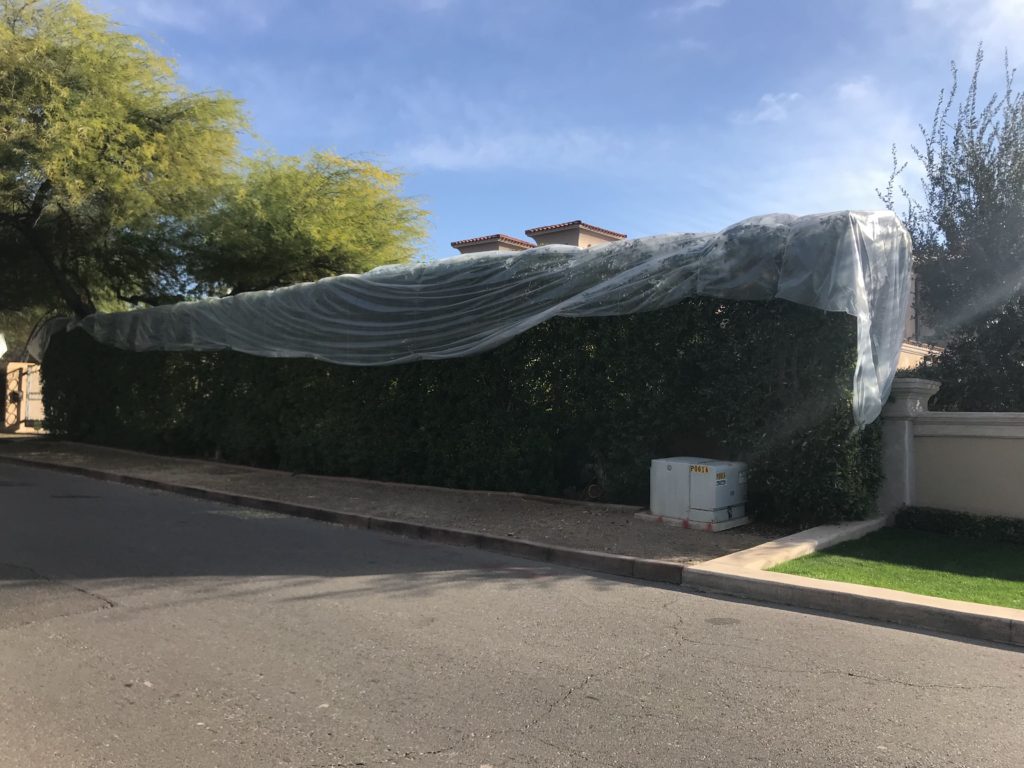
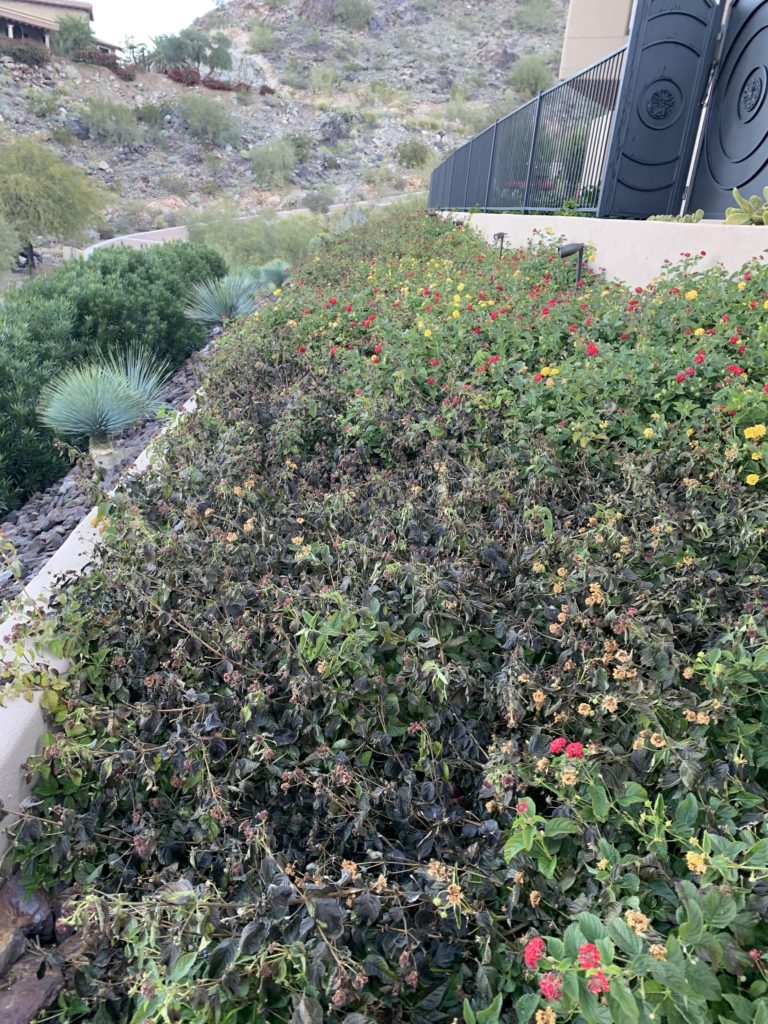
We haven’t seen any significant frost damage for the past few years and so protecting our plants can be forgotten, unless you caught the warning on the nightly news of the threat of sub-freezing temperatures. Running to Home Depot at 5pm the night before a frost might leave you disappointed to find they have sold their last frost cloth. You exit the store, race home and search the linen closet for any old sheet which might do the job. Tossing the sheet over that large bougainvillea, you feel like you’ve done all you can do to prevent damage to your beloved bougie. I see frost blankets tossed overtop of shrubs and hedges all over town, but I most often shake my head when I think of all the hard work and effort that went into putting it out, but it’s been done incorrectly. How hard can it be to cover a plant, right? But here’s where it gets technical: there is a right way to cover a plant, and there is a wrong way that will offer your plant very little if any protection from the cold. A frost cloth should cover the entire plant, from the top, down to the soil level, where it should be secured in order to trap warm air which raises from the earth. If you do not trap in the heat, you are essentially not providing protection to your plant. Unless you add heat under the cloth (Christmas lights are a popular heat source) it is not protecting your plants from cold temperatures.
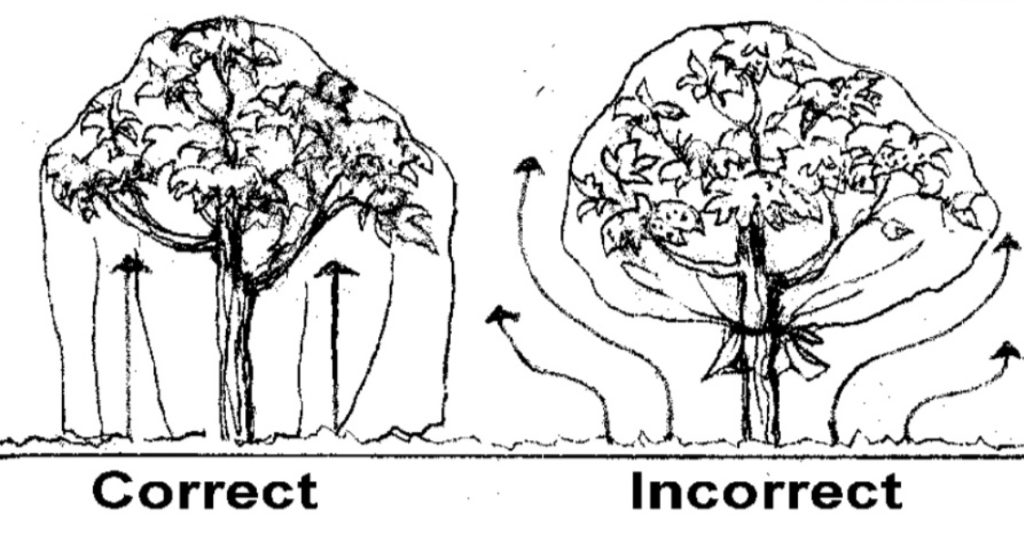
Tips on how to protect your plants from frost in the future:
- Invest in frost cloths early in the season to ensure they are on-hand when you need them.
- Drape cloth over top and down to the grown, extending the drape out wide, out towards the drip zone of the plant. Do not secure around tree trunks, since the trunk is not the source of the heat.
- Know your plants: cover tropical and subtropical plants with cloth, creating a bubble to lock in warm air under the plant. Once you’ve identified the plant, you may check the USDA or Sunset hardiness charts for temperatures plants will tolerate. The U of A Cooperative Extension also has an excellent resource for regional plants.
- Water all plants the afternoon or evening of the expected frost. Dehydrated plants are at much greater risk of frosting than watered plants. The evaporation of the water will create heat under the plant. If the frost is expected on Monday at 4am, program to water anytime Sunday evening and into the early morning hours of Monday.
- Cold, dry and clear mornings are the days you want to watch out for… humidity slows temperature change, which is a good thing when it comes to rapidly dropping cold temperatures! Wind is also helpful to reducing the risk of frost damage.
- Know your property: neighborhoods and microclimates can make a huge difference in what might be damaged by cold temperatures. Typically, properties closer to the mountains are warmer than those at the bottom of the hill. Walls, hardscape, overhangs or canopy coverage by large trees can also help protect plants in an area.
- Don’t prune plants which are at risk of frost damage in the late fall. Pruning can promote new tender growth close to frost events in the winter.
- Frost cloths may be left on up to 72 hours, but it is best if they are removed after 48 hours to allow plants access to light. Sheets or other dense covering should be removed daily.
- Most conventional cloths will protect plants down to about 30 degrees. There are other more industrial cloths available which can protect plants down to 20 degrees, but again, the protection comes from the skill of the covering which will be key in protecting your plants.
- If you are in a cold area, only plant cold-hardy species. We know those ficus are hard to resist with their glossy dark green leaves, but leave it at the nursery if you are in a colder area of Maricopa county.
Part 2: Removal of frost damage
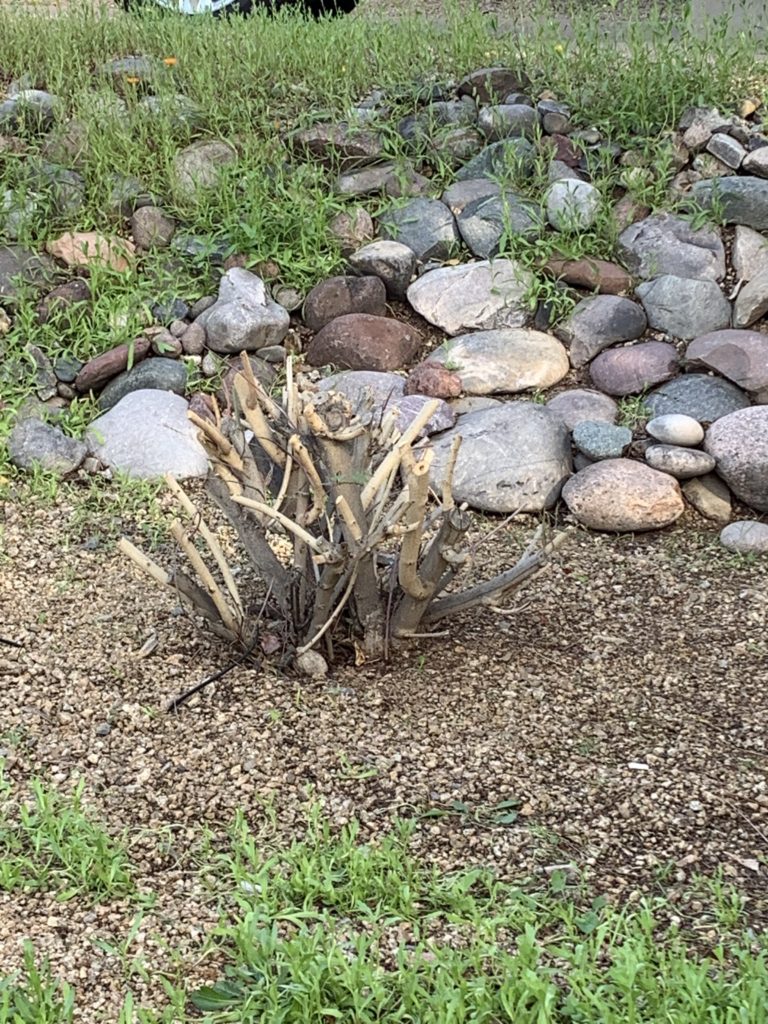
Now that you know how to protect your plants from a desert frost, what can you do to help them recover? The first thing you can do is leave it alone, for now anyways. Typically, the threat of frost declines around February 7th in the central part of Phoenix, whereas other areas in the east valley (Mesa, Chandler) may experience frost as late as early April. Looking at dead plants for two months is hard, believe me, I know! Resist the urge to start removing the frost damage until the threat is nearly past. For the central areas, I feel you can safely start cutting back lantana, oleander, and even bougainvillea around the second or third week of February. In other areas, wait another week or two in case we see another cold snap in the mid-spring. Over the last few warm winters, I have seen many lantana start pushing new growth around the end of January, which would easily be damaged if there was an early February frost. What we don’t want is to promote new growth, only to have it be nipped by a 30-degree morning, which can deplete a plant of energy needed to sprout in the spring.
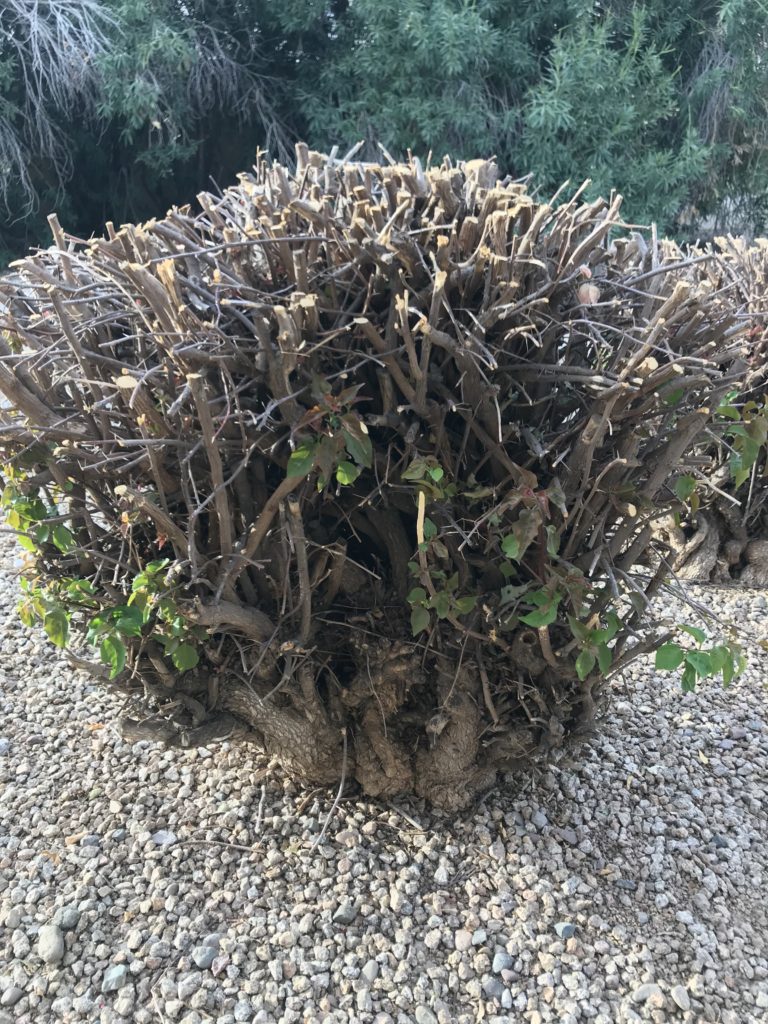
Depending on the species, current size, age and desired size will determine how low you will cut the plant back this season. Trailing lantana can be cut nearly to the ground level, while plants like bougainvillea might take some thinking on before you start cutting. Generally, larger, established shrubs can be cut back 30-50% of their size, if you want to maintain the plant at the same size as it ended the season last year. Rapid growers like the red bird of paradise you can be a bit more aggressive. I typically cut birds of paradise back to about 24-30” off the ground, removing all but a few main branches. This is a great time to thin out woody canopies, creating more air and light to get into shrubs, helping to encourage a more natural growth habit. After removing frost damaged limbs, water your plants well, helping them recover, and as soon as buds form on branch tips, fertilize with a 50% slow release product to encourage slow, even growth. If properly watered, your shrubs should not need to be pruned again until mid-summer when humidity hits and growth excellerates. If you need help with determining cutback height or timing for your plants and area, please give me a call. Before you know it, summer will be here and frost damage will be just a distant memory.




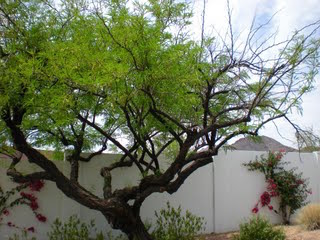 em. The root was cut a few years ago, but the tree did not start showing symptoms for at least a year after the project. The upper portions of the tree also contained flatheaded borers, causing additional damage to the mesquite tree. These branches will not likely survive and should be removed to prevent borers infesting other portions of the tree. To make way for the new electrical line, air trenching would have prevented the extensive root damage, borer infestation and branch dieback.
em. The root was cut a few years ago, but the tree did not start showing symptoms for at least a year after the project. The upper portions of the tree also contained flatheaded borers, causing additional damage to the mesquite tree. These branches will not likely survive and should be removed to prevent borers infesting other portions of the tree. To make way for the new electrical line, air trenching would have prevented the extensive root damage, borer infestation and branch dieback.